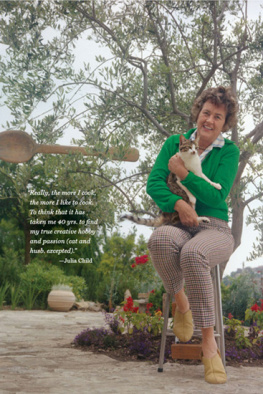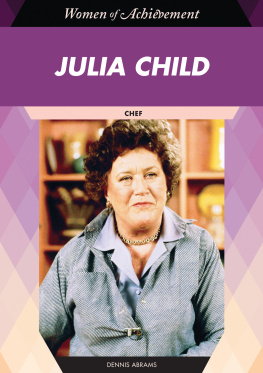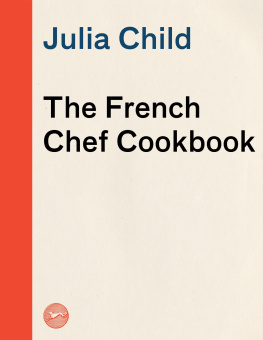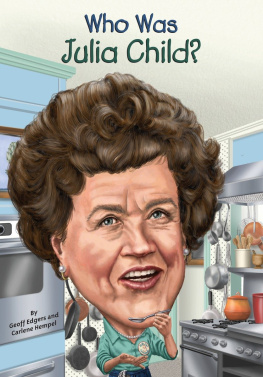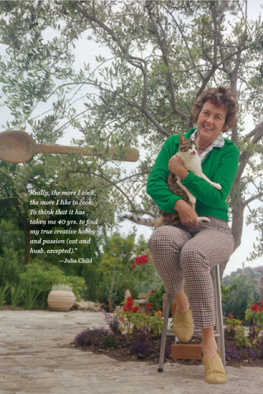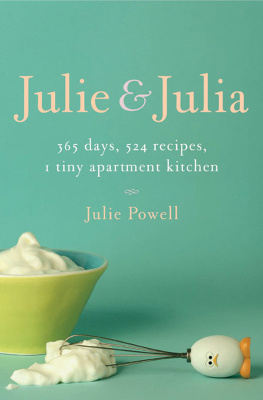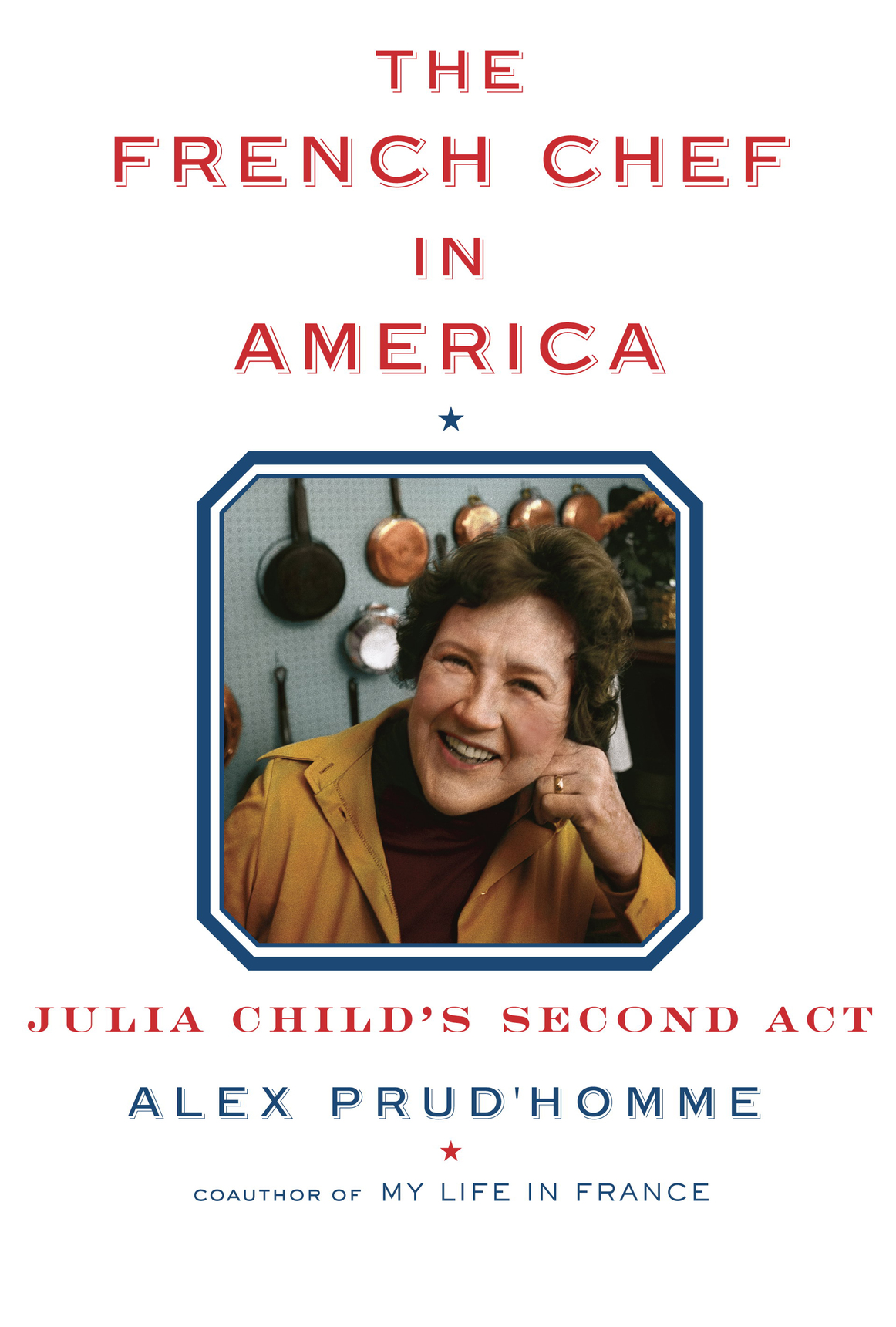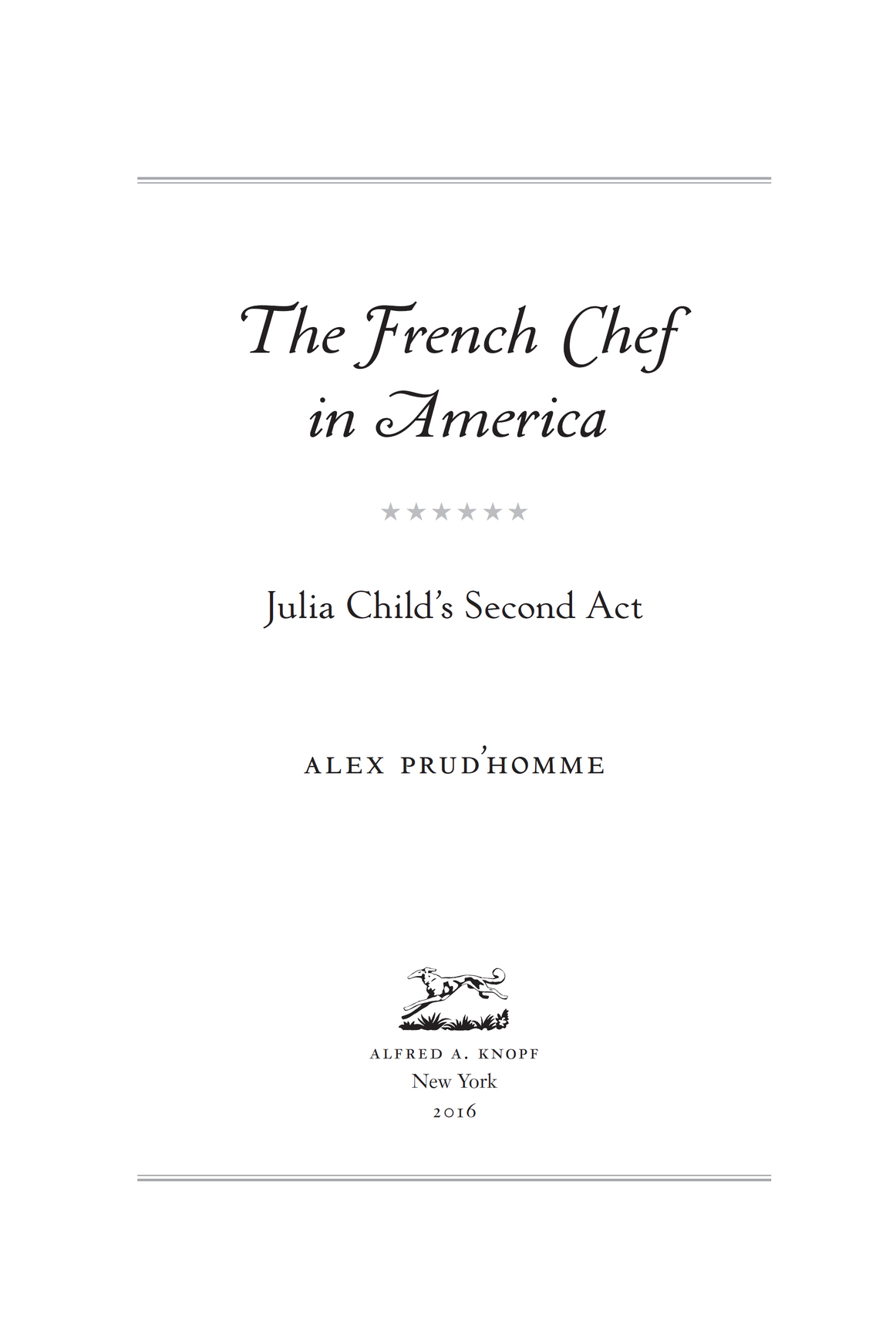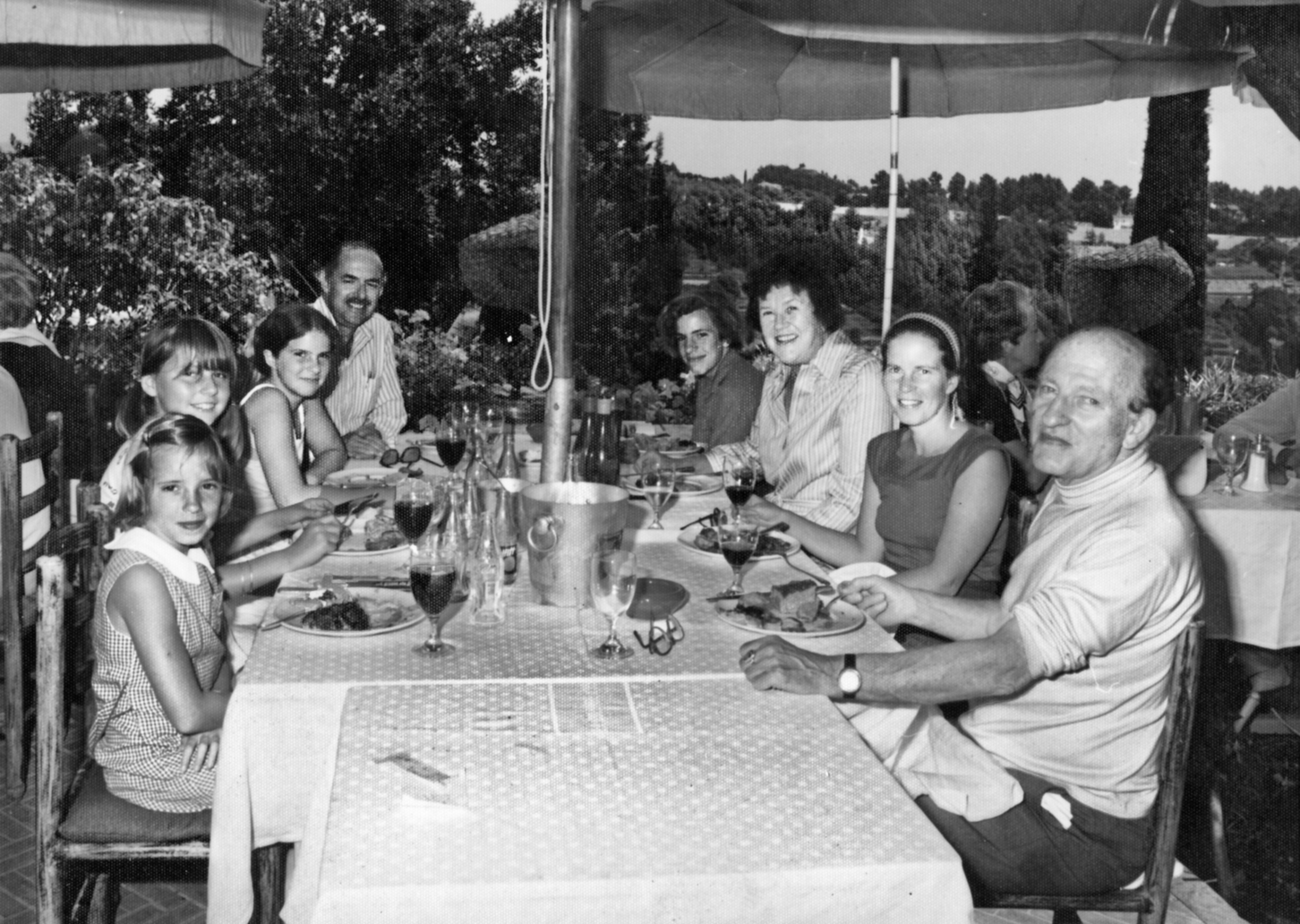ALSO BY ALEX PRUD HOMME
My Life in France (with Julia Child)
Hydrofracking: What Everyone Needs to Know
The Ripple Effect: The Fate of Freshwater in the Twenty-first Century
The Cell Game: Sam Waksals Fast Money and False Promisesand the Fate of ImClones Cancer Drug
Forewarned: Why the Government Is Failing to Protect Usand What We Must Do to Protect Ourselves
(with Michael Cherkasky)
THIS IS A BORZOI BOOK
PUBLISHED BY ALFRED A. KNOPF
Copyright 2016 by Alex Prudhomme
All rights reserved. Published in the United States by Alfred A. Knopf, a division of Penguin Random House LLC, New York, and in Canada by Random House of Canada, a division of Penguin Random House Canada Limited, Toronto.
www.aaknopf.com
Knopf, Borzoi Books, and the colophon are registered trademarks of Penguin Random House LLC.
Library of Congress Cataloging-in-Publication Data
Names: Prudhomme, Alex, author.
Title: The French chef in America : Julia Childs second act / Alex Prudhomme.
Description: First edition. | New York : Alfred A. Knopf, 2016. | Includes bibliographical references.
Identifiers: LCCN 2015043441 (print) | LCCN 2015051459 (ebook) | ISBN 9780385351751 (hardcover : alk. paper) | ISBN 9780385351768 (ebook)
Subjects: LCSH : Child, Julia. | CooksUnited StatesBiography.
Classification: LCC TX 649.C47 P78 2016 (print) | LCC TX 649. C 47 (ebook) | DDC 641.5092dc23
LC record available at http://lccn.loc.gov/2015043441
Ebook ISBN9780385351768
Cover photograph of Julia Child by Arnold Newman/Getty Images
Colorization by Dana Keller
Cover design by Carol Devine Carson
v4.1
a
To Judith B. Jones
CONTENTS
INTRODUCTION
Julias Second Act
I n mid-July 1976, Julia Child attended President Gerald R. Fords bicentennial celebration in Washington, D.C., where she provided commentary for public television, interviewed the White House chef, and met Queen Elizabeth II. Then, as the somewhat raucous party was still winding down, Julia slipped away to rejoin her husband, Paul, in the quiet anonymity of rural France.
Julia was near the height of her celebrity at the time. Performing as The French Chef, she had won an Emmy, a Peabody Award, and the French Ordre du Mrite Agricole; appeared on the cover of Time magazine; made documentary films; and co-authored two volumes of Mastering the Art of French Cooking, which had helped launch a food revolution in America. Flinging baguettes, slapping eggplants, flapping chicken wings, she had proven to be a natural on TV: a knowledgeable, unaffected culinary guide whose comic timing and idiosyncratic vocalizations were lauded and satirized across the country. In France, however, the French Chef was virtually unknown, which was just how the Childs liked it.
Every year, Paul and Julia would retreat to their small, simple house outside of Cannes for a few weeks at a time. They had named the house La PitchouneLa Peetch, for shortwhich means the little thing in the Provenal dialect. It was the place they went to exhale and rejuvenate. Paul would write, paint, photograph, and tend the garden. Julia would sleep, visit restaurants, and cook with her French sister, Simone Simca Beck. It was a familiar pattern, only this time the Childs invited my family to join them.
Julia and Paul on the terrace at La Pitchoune
We flew from New York to Nice, rented a small olive-green car, and drove along winding roads to the Childs house overlooking the hill town of Plascassier. That evening the Childs welcomed us with a succulent dinner of roasted lamb and ratatouille. Julia was ebullient. In the coming days, she toured us around the outdoor market in Cannes, where she spoke to nearly every vendor and bought heaps of fish for what she would deem a great bouillabaisse. Then she was offvisiting with M. F. K. Fisher, negotiating with the plumber, having her hair done, attending to desk work, and always tinkering with something delicious in her compact cuisine.
At La Peetchas in their much larger home kitchen in Cambridge, MassachusettsPaul had erected Peg-Board on the wall, from which he hung Julias batterie de cuisine. He outlined her copper pots and steel pans with black Magic Marker, so one would know exactly where each should be hung. Julia worked at a small gas stove vented by a window, a tall worktable, and with a row of knives arranged by size on a magnetic strip. It was an efficient space not much bigger than a ships galley, and it seemed to emit mouthwatering smells at all hours.
Though Julia and Paul never had children (they had tried but it didnt take, Julia said), they welcomed my sisters and me as surrogate grandchildren. Paul was the twin brother of my maternal grandfather, Charles Child. We had been lucky to spend time with Julia and Paul in Cambridge, New York, and Maine, but this was our first visit to La Pitchoune. I was almost fifteen years old in the summer of 1976, with bushy blond hair down to my shoulders; my sisters were thirteen and nine. While my parents were lodged in a guest room, my sisters slept in an outbuilding, and I was relegated to a couch in the open living-dining room. We children had been warned to be on our best behavior, and made sure to walk slowly and keep our voices down around Paul, who was seventy-four and still recovering from a heart-bypass operation two years earlier.
Paul was an erudite man who was a decade older, and several inches shorter, than Julia. He was pleasant, if reserved, that July. He would appear at meals, but spent much of his time sequestered in the little cabanon (cabin) across the driveway, painting, writing, and organizing the bottles in his wine cave. He had grown thin, his face was often slack, and he seemed mentally present one minute but distant the next. He could be stern and liked to talk about Serious Things, like Politics, Economics, and Culture, which made him an intimidating presence. I would later learn that he was suffering from nightmares and insomnia at the time. Because Julia was a snorer and a thrasher, they slept apart; but when Paul awoke at 4 oclock one morning, he slipped into her bed for comfort, and, he noted in his date book, they sleep late.
Lunch at La Colombe dOr in Saint-Paul-de-Vence, July 1976
Our two weeks at La Pitchoune were an idyll. We bought flowers in Grasse, shopped for handblown glass in Biot, picnicked in sunny fields, wandered through Old Nice, lunched at the house of the expat American chef Richard Olney, and swam in the azure Mediterranean. Inspired by the Formula 1 cars that race in nearby Monaco, I ground the gears and spun the tires of our rental car in the bumpy field below La Peetch, teaching myself how to drive a stick shift. After terrorizing a herd of goats, putting a dent in the fender (stone wall), and feeling the adrenaline surge as I bounced through mud patches at warp speed, I declared myself fit for a drivers license, not to mention hot laps around Monte Carlo.


